How to Tie Shoes with Orthotics – Stop Heel Slippage
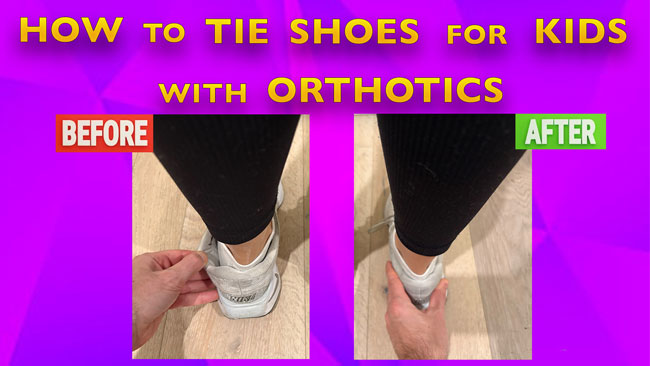
Tying your child’s shoes properly is key to making orthotics work the way they’re supposed to. Orthotics can slightly elevate the foot, which often makes it feel like the heel is slipping out of the shoe. Even high-quality orthotics won’t be effective if the shoes aren’t securely laced. In this step-by-step guide on how to tie shoes with orthotics to stop heel slippage, you’ll discover a simple yet powerful lacing technique that enhances fit, support, and comfort—keeping your child’s feet secure and stable all day long.
Get the Full Support and Stability the Orthotics Have to Offer
This lacing technique gently pushes your child’s feet back into the heel of the shoe, locking them in place to prevent any heel movement or slipping—ensuring a secure, comfortable fit all day long.
How to Tie Shoes with Orthotics in 3 Simple Steps
At the children’s shoe store where I work, one of my coworkers—an expert with over 20 years of experience fitting kids’ shoes—taught me a lacing technique that’s a game-changer for anyone who wears orthotics or shoe inserts. This simple method helps keep the foot securely in place and prevents common issues like heel slippage and discomfort.
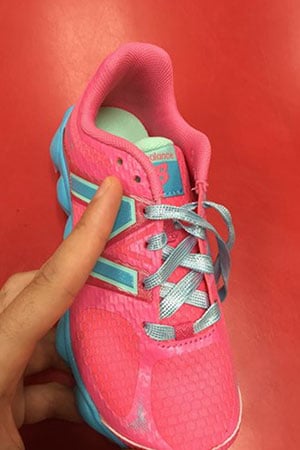

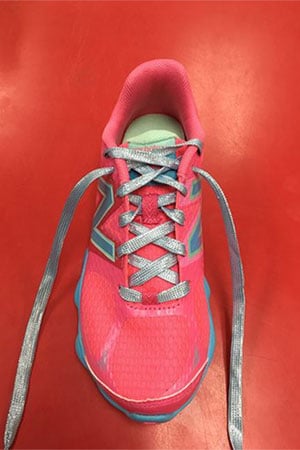
Most people overlook the extra eyelets at the top of their shoes—not realizing they’re a built-in secret weapon for better fit and support. When used correctly, these hidden holes can make a big difference in preventing heel slippage and improving overall comfort.
See Exactly How It’s Done – Watch the Video Tutorial
In this video, I walk you through my simple three-step method to properly tie shoes with orthotics. It’s the easiest way to see exactly how it’s done!
Best Shoelaces for Kids – They Stay Tie Longer!
The shoelaces featured in this video are oval, not flat, because oval laces tend to hold knots much better. One of my top picks is the Greatlaces ProAthletic™ Oval-Bubbles, which features a unique textured design that keeps laces from coming undone.
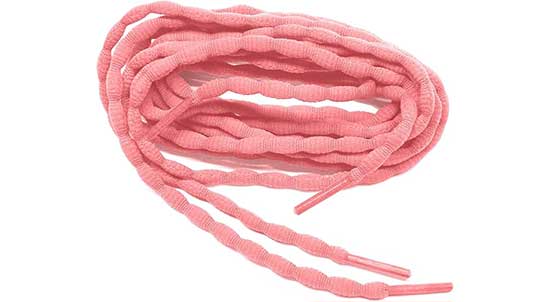
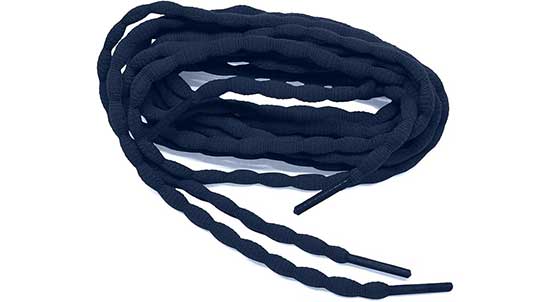
- Order these shoelaces made by GREATLACES on Amazon
- The packing contains two pairs of laces
- Order the correct lace length by counting how many eyelets (shoe holes) your child’s shoes have
- Disclosure: Some links in this post may be affiliate links
Many kids’ shoes come with laces that are simply too short to tie securely—let alone double-knot! To make sure your child can lace up properly, just count the number of eyelets (shoe holes) on each side of the shoe. This quick step helps you choose the perfect lace length for a secure, comfortable fit.
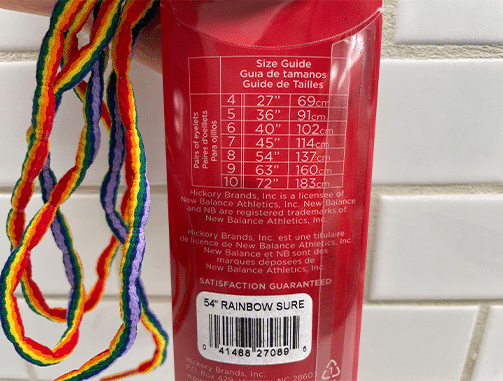
Bonus Resource: Best Shoes for Kids Who Wear Orthotics
Finding the right shoe for a child who wears orthotics is just as important as how you tie them. Look for supportive and deep shoes with firm heel counters and oversized openings to accommodate orthotics. Some recommended brands include New Balance and Stride Rite, which offer a range of options specifically designed for kids who need extra support.
Properly Tying Your Kids’ Shoes Might Help Prevent Injuries
Tying your child’s shoes properly does more than prevent falls — it boosts support, stability, and confidence while they play. The “reverse the laces” technique offers key benefits:
- A snug fit around the ankle and heels, so shoes stay secure and feet don’t slip out.
- Reduced friction to help prevent blisters during walking or running.
- Improved support to lower the risk of injuries.
Help your kids build the habit of undoing their shoelaces or Velcro straps every time they take off their shoes—it makes a big difference! Remind them that pulling shoes off without unfastening them can damage the heel counter, the sturdy part at the back that supports their ankles. Taking a few extra seconds to loosen their shoes properly helps them last longer and keeps their feet better supported.



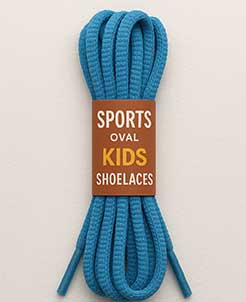
I had no idea that the way you tied your shoes made such a big difference in the way your foot sits in the shoe. If you’re wearing orthotics, I can see how this would be important, but I’ve never actually thought about it before. I suppose the more you know, the better off you’ll be, so thanks for sharing.
Tobias,
I am glad you learned something new!
This was a helpful article because both of my kids need orthotics, only on one foot, but still. My son plays football so I need his orthotics to stay in place or his ankles and knees will get aggravated. I will definitely follow your article. I must say that I never knew about the reverse laces until now. Very neat!
Atar,
You will see what a difference that lacing technique makes! is your child wearing the orthotics in only one foot for a particular reason? The only time I have seen this happened is when there is a height discrepancy between the legs.
This is very informative article. My sisters daughter have to wear one of those special shoes as her foot is flat and if not treated it can bring many health problems to her in the future. Thank you for this info, I will forward your website to my sister to learn more. 🙂
Lenka,
I believe she will benefit from it. A shoe needs to be properly tied in order to get the full support of the orthotic and the shoe.
I am so glad that you brought light to the importance of using those ankle eyelets!!! Sooo very important for those growing feet!
You are doing a fabulous job informing the online world of little “tricks” that can benefit their youngsters feet for the rest of their lives!
Thank you!
Dr. Baker,
That is the purpose of the website. Inform parents so they can make the most informative decision when taking care of their children feet.
Wow! I never would have thought that just the way you tie your shoes would make a difference. Also never heard of the reverse tying technique, but it sounds very effective. Sounds like you are giving good advice here, especially with orthotics. Helping kids is always important. Great post! Wish you good luck!
Kevin,
The way we tie our shoes makes all the difference. If your children are wearing their shoes too loose, then they are not getting all the support and stability from the shoes AND from the orthotics. The “reverse the laces” technique is the most effective way of tying shoes I have ever tried. I enjoy working with kids, and the fact that I am able to make a difference, it means a lot to me.
It is so good to read a helpful post about how to tie shoe lace with orthotics. Reverse the laces techniques is something new for me. I would like to try this. Have you considered posting a video which demonstrates this. I think your 3 steps helps. I think this is important especially for parents when tying the laces of their children.
I love the “reverse the laces technique”. I use it when I am on the treadmill, playing soccer, or when I have had a long day at work and my feet hurt. It works wonders for children who have orthotics. I will provide parents with a video shortly!
I think that remembering that orthotics and shoes work together are a great point. It seems like it can be easy to forget this. It also sounds like a simple tip to remember but it can make a big difference.
It makes all the difference!! If the shoe is not supportive enough, the orthotic will not do any good. Good supportive shoes must be worn with the orthotic for your child to get the full benefit of it!